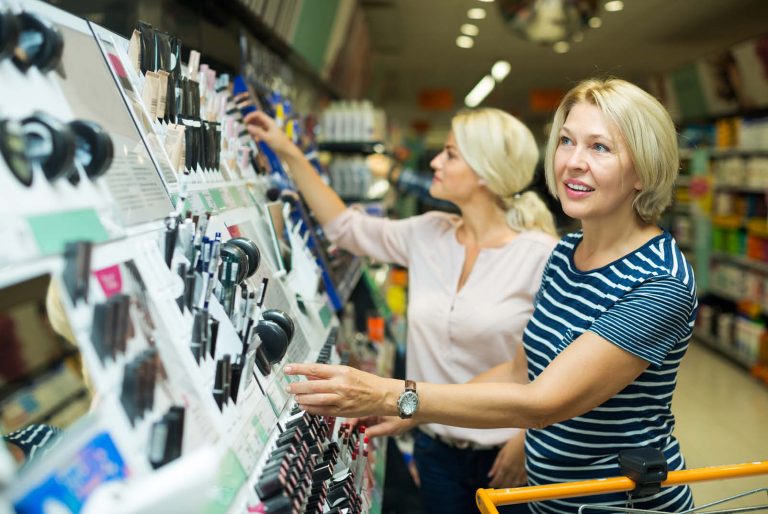by Sarah Halfpenny
There’s no age limit on makeup – the key is knowing how to adapt it to your changing skin …
-
Never skip the SPF
Your moisturiser or foundation might have SPF in it already, but if it’s lower than 30 and you’re going to be outdoors or driving (remember UVA rays penetrate glass!) then apply a light sunscreen over the top too.
-
Primer is paramount
Primer is like laying down a smooth canvas for the rest of your makeup to glide onto. It also stops foundation from sinking into wrinkles and helps makeup stay in place longer. Apply it after your moisturiser and sunscreen.
-
Ditch the powder
Coating your face in powder doesn’t work too well for mature skin as it settles into lines and creases. Instead, reach for a setting spray and spritz your face in an ‘X’ motion and then a ‘T’ shape to cover all areas.
-
Serums are super
Serums contain a higher level of ingredients and have a smaller molecular structure so they penetrate deeper into the skin. Just a drop or two on damp skin before you moisturise can deliver all sorts of benefits, including hydration (hyaluronic acid), smoothing lines (retinol), firmness (niacinamide) and brightness (vitamin C).
-
The eyes have it
The way you apply your eyeliner can make a huge difference. Firstly, consider using grey or brown liner rather than black for a softer look. If you want to emphasise your eye shape and draw attention away from under-eye bags and lines, rim the upper and lower lids. If you have deep-set eyes, line the upper lid at the lash roots and underneath at the waterline (the line of skin between the eyelashes and the eye). And if you have redness, line the lower waterline with a beige eye pencil.
Know your BB from your CC and DD creams: must-try makeup basics for mature faces over 55




